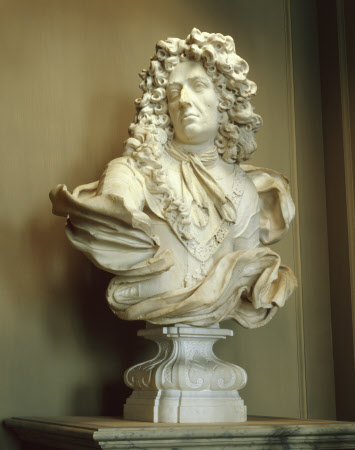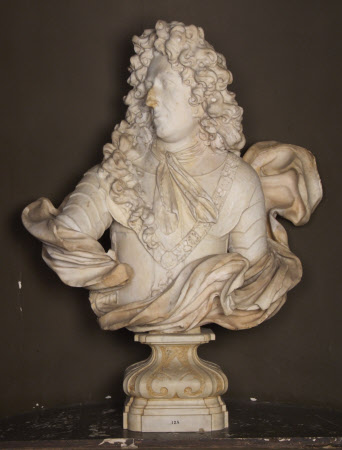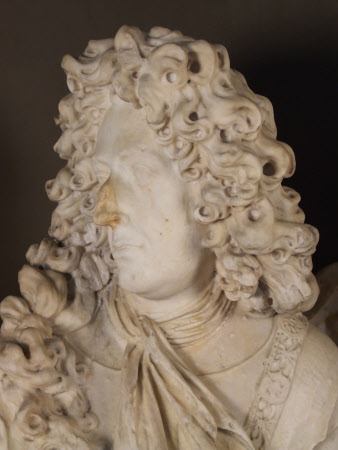King William III (1650–1702)
Honoré Pelle (fl. 1672 – 1706)
Category
Art / Sculpture
Date
1724
Materials
Marble
Measurements
1300 mm (Height)
Order this imageCollection
Petworth House and Park, West Sussex
NT 485241
Summary
Marble sculpture, King William III (1650-1702) by Honoré Pelle (fl. 1672 – 1706). An over life-size portrait bust of William III (1650-1702) by Honoré Pelle who was inspired by Bernini's bust of Louis XIV (1665, Versailles) in creating this truly Baroque image of kingship. The head is turned to one side and the hair flows to below the shoulders. This bust is probably the 'marble head representing the late King William' for which the 6th Duke of Somerset paid £6 in 1724. The surface of the bust is weathered because it was placed for many years in a niche on the exterior of the Leconfield Hall. A copy has been substituted. Honoré Pelle was a Huguenot émigré from France, a Provencal who worked in Genoa and Modena before coming to England. The 6th Duke of Somerset employed numerous French Huguenots (including Daniel Marot, to whose designs Petworth was probably rebuilt) and Pelle may well have worked for the English crown - the Royal Wardrobe was a source of several craftsmen mentioned in the ducal accounts. There is a bust of Charles II (1684) by Pelle in the Victoria and Albert Museum, London. William III, known as William of Orange (1650-1702) Stadholder of the United Provinces (1672-1702) and king of Great Britain (1689-1702) was born in The Hague, the son of William II of Orange and Mary, the eldest daughter of Charles I of England. In 1677 he married his cousin Mary (1662-1694), the daughter of James II and Anne Hyde. He was invited to redress the grievances of the country and landed at Torbay in 1688 with an English and Dutch army and forced James II to flee. William and Mary were proclaimed rulers early the following year. He defeated James's supporters at Killecranke (1689) and at the Boyne (1690), then concentrated on the War of the Grand Alliance against France (1689-1697) in which he was finally succesful. In later years, he had to withstand much parliamentary opposition to his proposals and there were many assassination plots. He died in London, childless, the crown passing to Mary's sister, Anne. ,
Provenance
Probably the 'marble head representing the late King William' for which the 6th Duke of Somerset paid £6 in 1724 and thence by descent; on loan from Egremont private collection
Marks and inscriptions
128 (painted on front of socle)
Makers and roles
Honoré Pelle (fl. 1672 – 1706), sculptor J. Bysouth, sculptor Giudicci Martin, restorer


